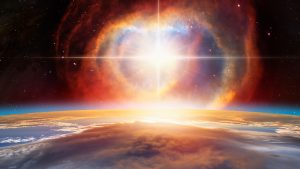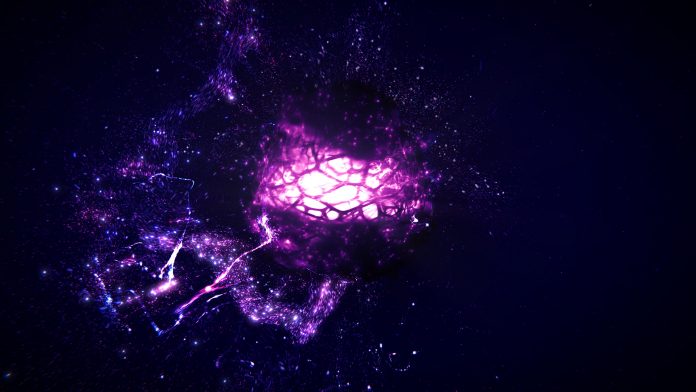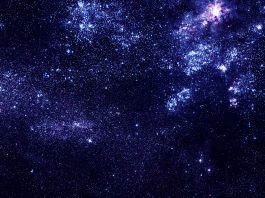In a new study, researchers from Ohio State University have discovered that exploding stars can help reveal the secrets of neutrino properties and how they interact with themselves.
Neutrino properties are one of the least understood phenomena in space research. They rarely interact with normal matter, and instead travel invisibly at almost the speed of light.
These ghostly particles outnumber all atoms in the Universe and are constantly passing through our bodies. However, due to their low mass and lack of an electric charge they can be incredibly difficult to find and study.
The new research, published in Physical Review Letters, establishes a framework for how supernovae can be used as powerful tools to study how neutrino properties can cause vast cosmological changes in the Universe.
Neutrino properties still puzzle scientists, but supernovae may unlock some answers
“Neutrinos only have very small rates of interaction with typical matter, so it’s difficult to detect them and test any of their properties,” said Po-Wen Chang, lead author of the study and a graduate student in physics at Ohio State.
“That’s why we have to use astrophysics and cosmology to discover interesting phenomena about them.”
Thought to have been crucial in the formation of the early Universe, neutrino properties are still puzzling to scientists despite our knowledge that they originate from a number of sources.

By calculating how self-interactions would affect the neutrino signal from Supernova 1987A, the nearest supernova observed in modern times, researchers found that when neutrinos do interact with themselves. They form a tightly coupled fluid that expands under relativistic hydrodynamics – a branch of physics that deals with how flows impact solid objects in one of two different ways.
The team theorised that like popping a highly pressurised balloon in the vacuum of space would push energy outward, a burst produces a neutrino fluid that moves in all directions. The second case, described as a ‘wind outflow’, imagines a highly pressurised balloon with many nozzles, wherein neutrino properties escape at a more constant flow rate, similar to a jet of steady wind.
Chang explained: “The dynamics of supernovae are complicated, but this result is promising because with relativistic hydrodynamics we know there’s a fork in the road in understanding how they work now.”
A significant milestone in a decades-old issue
Further research needs to be done before scientists can cross off the possibility of the burst case happening inside supernovae as well.
Despite this, the study is a huge milestone in answering the decades-old astrophysical issue of how neutrino properties actually scatter when ejected from supernovae.
This study found that in the burst case, unprecedented sensitivity to neutrino self-interactions is possible even with sparse neutrino data from SN 1987A and conservative analysis assumptions.
“This problem has lain basically untouched for 35 years,” said John Beacom, co-author of the study and a professor of physics and astronomy at Ohio State.
“So even though we were not able to completely solve how neutrino properties affect supernovae, what we’re excited about is that we were able to make a substantial step forward.”
Future uses of the research
In the future, the team hopes their work will be used as a stepping stone to further investigate neutrino self-interactions. However, because only about two or three supernovae happen per century in the Milky Way, it’s likely researchers will have to wait decades more to collect enough data on neutrino properties.
Chang concluded: “We’re always praying for another galactic supernova to happen somewhere and soon, but the best we can do is try to build on what we know as much as possible before it happens.”









